“Life is infinitely stranger than anything which the mind of man could invent. We would not dare to conceive the things which are really mere commonplaces of existence. If we could fly out of that window hand in hand, hover over this great city, gently remove the roofs, and and peep in at the queer things which are going on, the strange coincidences, the plannings, the cross-purposes, the wonderful chains of events, working through generations, and leading to the most outre results, it would make all fiction with its conventionalities and foreseen conclusions most stale and unprofitable.” - Sherlock Holmes in A Case of Identity (ACD, 1892)
Don't wanna be here? Send us removal request.
Text
Why is every piece of media now about “surprise! bet you didn’t see that coming” instead of themes, character arcs, internal logic, and consistency in writing?
It’s okay if your audience (especially hardcore fans) predicts your story. It means that they picked up the clues you put in, understood the themes you were trying to convey, empathised with the characters…
How is that a bad thing?
Instead each piece of media feels like it’s written by a marketing team that is looking at the latest statistics for TRP ratings and box-office collections.
63K notes
·
View notes
Text
🙂
Irony is dead.
Someone just shared, without critique, a post (which I’m not linking to it because it was absolute uneducated trash of the highest lowest order) about how “organic food isn’t healthier for you”. It was littered with straw man arguments but crucially nowhere did the offending post acknowledge pesticides. Not once. One could be forgiven for thinking the post had been written by a lobbyist. Irritated at the miseducation that gets peddled on this hell site as knowledge, I scroll down my dash and I don’t get more than four posts and there’s a beautifully illustrated post that says “save the bees”. How did it get there? RB’d by the same person. *bashes head on desk*
8 notes
·
View notes
Text
No.
Irony is dead.
Someone just shared, without critique, a post (which I’m not linking to it because it was absolute uneducated trash of the highest lowest order) about how “organic food isn’t healthier for you”. It was littered with straw man arguments but crucially nowhere did the offending post acknowledge pesticides. Not once. One could be forgiven for thinking the post had been written by a lobbyist. Irritated at the miseducation that gets peddled on this hell site as knowledge, I scroll down my dash and I don’t get more than four posts and there’s a beautifully illustrated post that says “save the bees”. How did it get there? RB’d by the same person. *bashes head on desk*
8 notes
·
View notes
Text
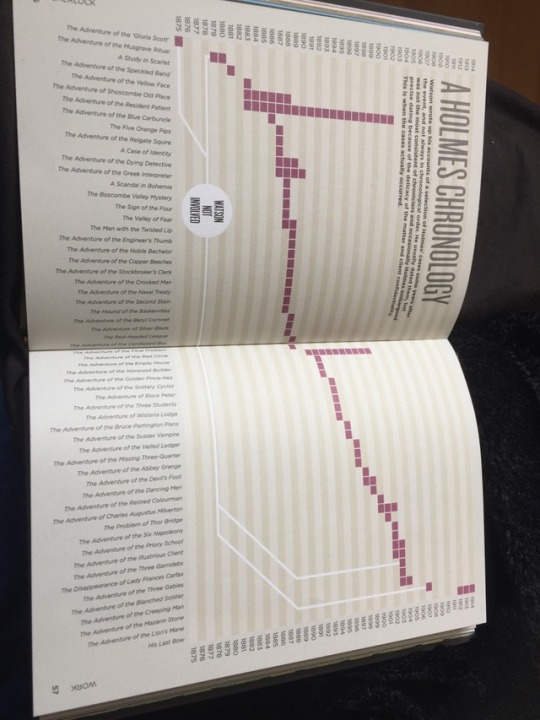
As per the tags of Sunday’s post, this is the chronology graph in Biographic Sherlock, but I can’t make head nor tail of it, so if any body could deconstruct it enough for it to be easily understandable, I’d be much oblidged.
31 notes
·
View notes
Text
Irony is dead.
Someone just shared, without critique, a post (which I’m not linking to it because it was absolute uneducated trash of the highest lowest order) about how “organic food isn’t healthier for you”. It was littered with straw man arguments but crucially nowhere did the offending post acknowledge pesticides. Not once. One could be forgiven for thinking the post had been written by a lobbyist. Irritated at the miseducation that gets peddled on this hell site as knowledge, I scroll down my dash and I don’t get more than four posts and there’s a beautifully illustrated post that says “save the bees”. How did it get there? RB’d by the same person. *bashes head on desk*
8 notes
·
View notes
Note
If slugs are attacking your tender spring plantlings, read them this post.
Just wanted to say that your salty Sherlock posts give me life. I watched the premiere of TFP with my ex (who had gotten into the show thanks to me), and when it finished he said "what the fuck was that", lmao. It's amazing how three episodes (of S4) managed to ruin the whole show for us.
Hey! Thanks, I really appreciate that!
We watched the Russian leak of TFP and it had an air of “this HAS to be fake RIGHT???” about it. And then the same ep aired on TV and we were shook. It was seriously so bad.
It is sad how three terrible episodes can completely destroy something that was great. Although I stand by that S3 wasn’t really that great either and downhill turn for the whole show. I still like TAB though.
Salt on my friend! S4 was a total shit show and we should say so
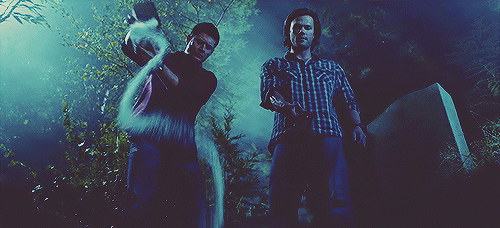
49 notes
·
View notes
Text
Blimey Charlie. This is one deep dive.
Sticking a post-it note for myself here as it’s going to take a while to read it all thoroughly and digest and I don’t yet know if it features in this discussion: changes made to the sequence of TST in the editing room.
When did Sherlock actually OD?
The idea that we’re in Sherlock’s head in S4 has been discussed extensively before, at first by the brilliant people who came up with the EMP theory, later by me (X, X, X, X, X) and by a lot of others. But this interesting post from @the-signs-of-two providing new clues that “Sherlock is in his mind palace throughout S4 while overdosing”, with additions from @sarahthecoat and @gosherlocked, among others, made me want to focus a bit more on Sherlock’s overdose on drugs and some thoughts around that. This meta is not about the multiple mirrors, metaphors, codes and symbolism we see in BBC Sherlock (which have been discussed even more extensively), but rather about what plausible explanations there might be for the increasing absurdity of it.
Messed-up timeline and lack of logics
First of all, I think the timeline of this show is warped, at the very least from HLV and onwards. And actually, there seems to be some hints about this as well, for example these words by Mr and Mrs Welsborough in TST:
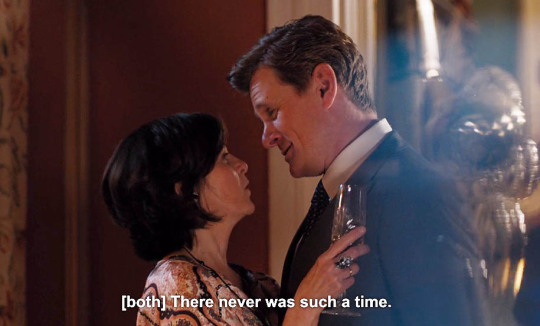
And of course, if the events in S4 only happened inside Sherlock’s head, there literally never was such a time. At least not in the order that the events are presented to us. Some big chunks of this story seems to be missing, while others have switched places with each other in time, making a complete, absurd mess of it all. (And I do believe this is all done intentionally by the screen-writers, to distract the audience from what’s actually going on.) After TSoT the narrative is no longer presented in a comprehensible order. But this would also mean that some apparently absurd things we see in S4 might have actually happened before that, albeit in another, more logical, context. And maybe they weren’t even presented to us that way, right? My point is: some things that appear as non sequiturs in S4 just might make more sense in another time frame. So let’s explore that.
An example of the first case, with important, missing time chunks: We’re not privy to what happened after Sherlock nearly died for the second time in HLV, when his heart stopped after the “Watson domestic scene” in 221B.
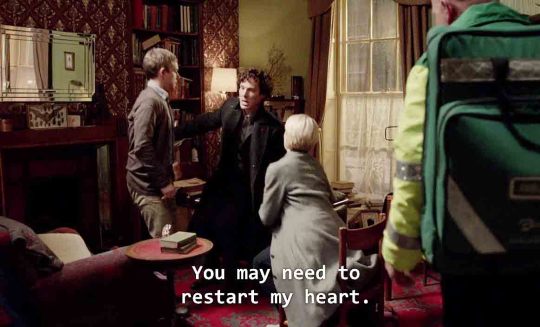
We only see him show up at his parents’ house at Christmas, supposedly after several months of recovery in hospital. As if the dying protagonist’s condition in between these time windows wasn’t even important. And ‘Mary’, who nearly killed Sherlock the first time and then threatened to finish the job, is now invited to celebrate Christmas with Sherlock’s family as if nothing, apparently meant to reconcile with John. But these scenes are mixed up in time with the domestic quarrel and the scenes where Sherlock sets up a trap to reveal ‘Mary’s true intentions to John. This confusion of timelines makes us totally miss the moment when we should have thought “wait a minute - what happened with the murder attempt against the show’s main character?” It was, of course, never logical, as @gosherlocked pointed out in this addition, that Sherlock was now defending ’Mary’s murder attempt, claiming instead that it was life-saving.
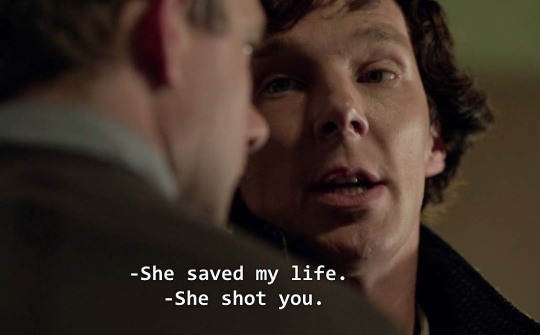
We never get to see how and when Sherlock came to this absurd conclusion, though, we merely see some confusing ‘deductions’ about how a gun-shot can be “surgery” because it’s not a head-shot, or about who must have called the ambulance. These ‘deductions’ have logical errors like causal fallacies and the “slippery slope fallacy”. I once wrote a meta about Sherlock’s lack of logics in HLV and onwards. Something seems to have been blocking his usually brilliant thought process - was it the IV-morphine against the pain in his chest wound? But it had already worn off, hadn’t it?
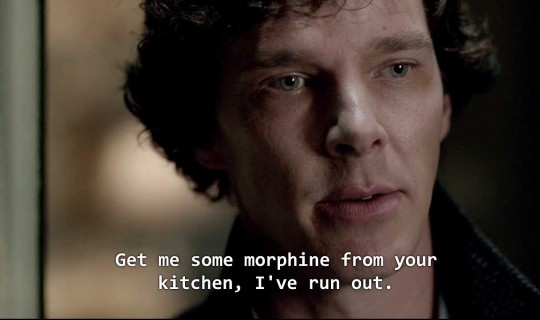
And neither was it logical, I’d say, that John’s wife had suddenly turned into someone like The Spider of TBB; a facade-climbing ninja committing murders in high buildings. Or that a critically wounded and newly operated Sherlock would be capable of climbing out of his hospital window, stealing the wheelchair and IV-drip on his way and setting up a trap for ’Mary’ in another part of town. And, in the mean time, even place a perfume bottle as a hint to John in 221B. Is he Superman or what?
Another example of missing chunks of time is between TLD and TFP, where we never get to know what actually happened after Eurus shot John in the face.
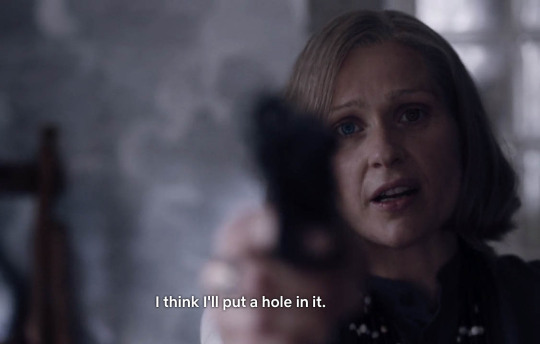
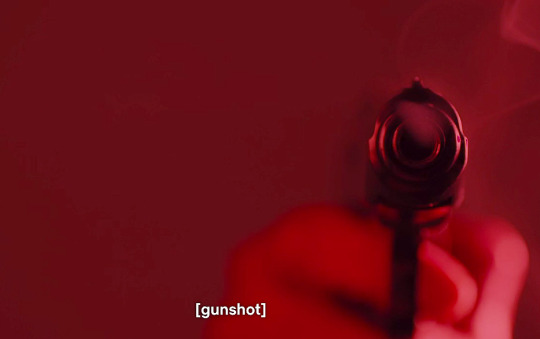
A smoking gun, followed by nothing, and in TFP we then learn that apparently the shooting was just done with a tranquilizer. Why? We’re never told.
And yet another: When did Sherlock manage to get out of his heavy drug abuse in TLD? 221B was turned into a meth lab and Sherlock was so addicted that he had to inject right before talking to the kids in a hospital. His friends had to take turns babysitting him, but apparently he could just snap out of it off-screen? We never got to know how this worked, that part is also missing.
The thing is, from HLV and onwards, neither Sherlock or John seems to have any normal human limitations. They go through fatal situations, where any real person would be bound to either die or be hospitalised, but afterwards they just carry on as if nothing, and any time frame containing real concern about the consequences to their life and health is simply left out.
Time inconsistencies in Sherlock Holmes is nothing new, though; already some of ACD’s canon stories have them (which would be of no surprise, considering that he wrote those stories during several decades, so I imagine it must have been difficult to recall all former events in a perfectly logical order). But ACD’s inconsistencies are minor, I’d say. BBC Sherlock, on the other hand, displays an increasing level of absurdity, at least from TEH.
So - when did it happen?
I think many of us feel pretty convinced that S4 happens inside Sherlock’s head, since this would explain all the logical problems mentioned above. But it’s still difficult to pinpoint exactly when he was actually trapped in there - the “point of no return” - since there are weird elements in this show already from ASiP. That’s why I think we’re seeing the show from Sherlock’s perspective from start; we’re in his head, and whenever it get’s a bit too weird it’s because he’s fantasizing things, reconstructing scenarios on his Mind Stage. This is how Sherlock Holmes’s puzzle solving usually works; it’s his MO. But there’s a difference between Sherlock recalling and dramatizing events in his head - while reading John’s blog - that have actually happened, and Sherlock making stuff up entirely inside his head. Events that aren’t confirmed by anyone else.
In TAB we’re outright told that the Victorian scenes we see were happening inside Sherlock’s Mind Palace:
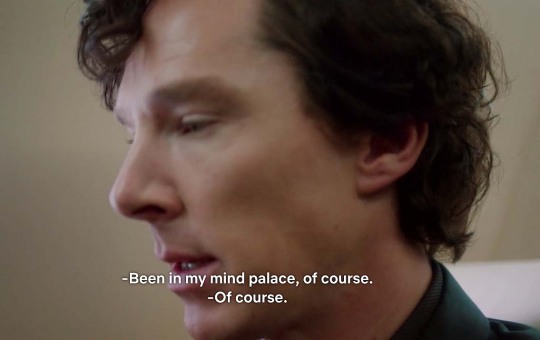
A fantasy, thus. But we’re also told that the Victorian scenes are the product of Sherlock having overdosed on a cocktail of drugs, within the five minutes it took for the plane to take off and then land again:
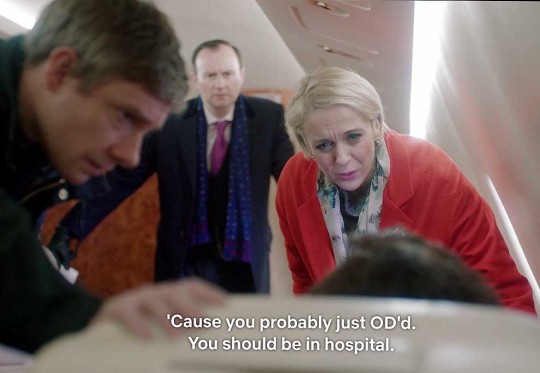
But this time frame doesn’t make sense, as John points out:
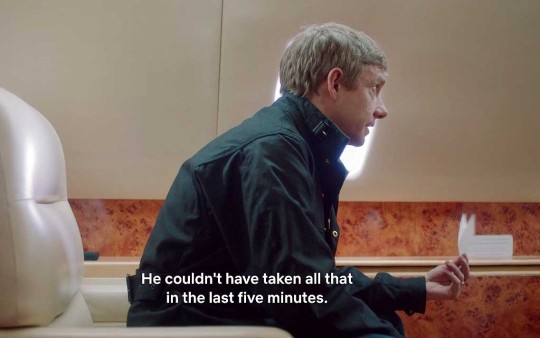

OK Mycroft, fine, but was there even a plane? And if Sherlock was kept imprisoned and isolated before this supposed plane ride, when could he have got the opportunity to take the drugs? As I said in an addition to @the-signs-of-two‘s post, I don’t believe Sherlock’s OD actually happened in TAB, because TAB isn’t ’real’ and never was. It’s all taking place in Sherlock’s head, even the modern scene on the plane above, which is eventually followed by Sherlock, Mycroft and Greg witnessing a skeleton coming to life, and immediately after that scene this:
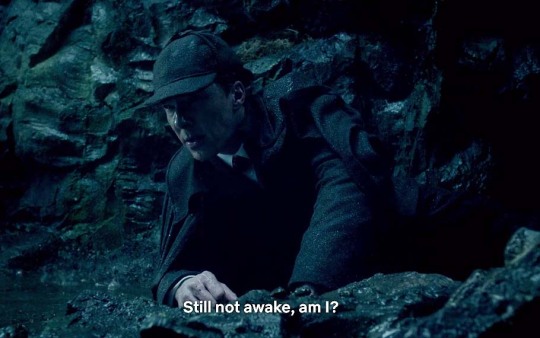
And I also highly doubt there ever was any ’deportation’ of Sherlock to Eastern Europe after having murdered Magnussen, because that scenario is absurd in and off itself. It would be much more likely to be part of a drug-induced dream separated from reality. Just think about it: would Sherlock Holmes shoot someone in the head rather than try to solve the problem? And would he do this to protect someone who had shot and almost killed him? And Mycroft, who is ’constantly worried’ about his brother’s welfare and drug addiction, would he send him off to a certain death rather than prison? No - just no; none of those things makes an iota of sense, and nor have they any similarity to ACD canon.
But knowing that Sherlock is indeed a drug-addict (like in canon) and probably also heart-broken after John’s wedding, I think it’s still likely that he actually did OD at some point. The drugs could well have lead to him being comatose and locked inside his own mind for a much longer time than his usual MP visits. The question is when he did it, though. Because if HLV and TAB are too weird to actually have happened, if they represent Sherlock’s drug-induced dream scenarios, then when did he actually overdose? Well, I think Mycroft has the answer:
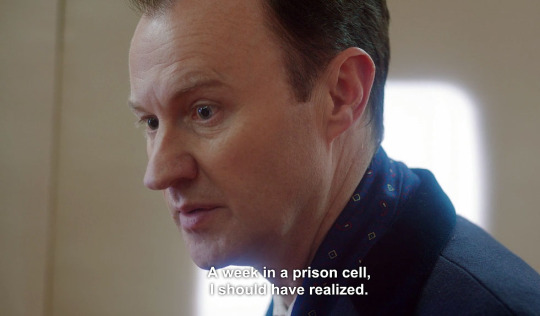
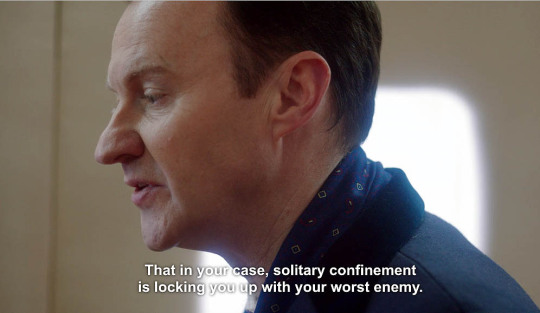
If there never was any week of imprisonment in HLV, because HLV is all Mind Palace, when is this ‘solitary confinement’ most likely to have occurred?
Well, John’s honeymoon is rather likely to have lasted about a week, isn’t it? On the very final comments on the blog we see how desperately lonely Sherlock feels when John is on “sex holiday” with ‘Mary’:

In other words: he’s spending a week of solitary confinement in 221B. A week when Sherlock could have resorted to drug abuse, turning his own flat into a drug den. But this is also pretty much exactly what we see in TLD, isn’t it? When John has stopped visiting or even talking to him, Sherlock is isolating himself in 221B, high as a kite, preparing drugs in the kitchen, reciting Shakespeare, shooting pictures of Culverton Smith and believing he’s walking on the wall:
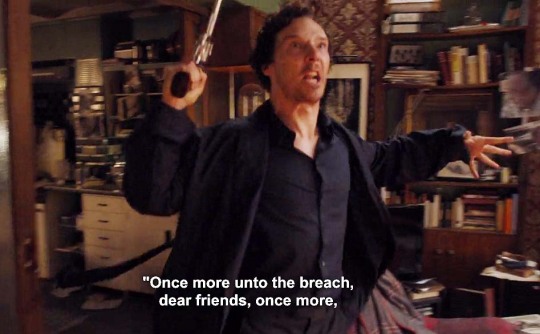
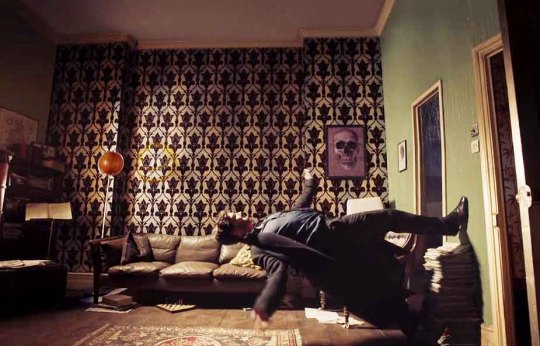
What if similar things to these actually did happen, but in another time frame, right after the wedding, resulting in an overdose? Far more logical and likely than the weird narrative of TLD, in my opinion.
After the wedding in TSoT, the next time we see Sherlock (HLV) John finds him in a drug den - with green tiles like 221B’s kitchen. We learn from Kate, Isaac Whitney’s mother, that this is a place where people “shoot up”. John asks for the exact address, but we never get to know it… And even if Sherlock claims that he’s there for a case (Magnussen), later in 221B he admits that he is indeed high.
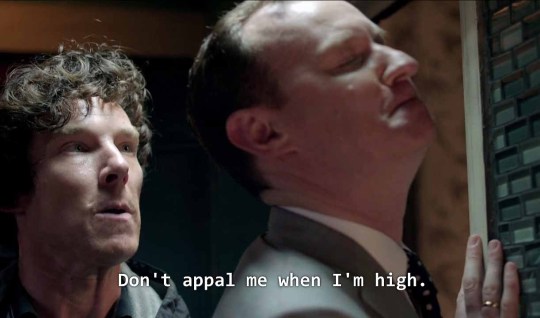
But the main reason I believe that the OD happened right after the wedding is that this was exactly when John’s blog stopped updating. Since the blog is an external factor, written by John, it simply can’t be reflecting Sherlock’s version of the events. Until he hacks it and takes over the blog after the wedding. I think this symbolizes that Sherlock has now completely taken over the narrative (which is also manifested in S4, with John typing things on a jpg file in TST which we never see published, and people believing it’s Sherlock’s blog in TLD).
Up to this point, the narrative has been - broadly speaking - consistent with John’s version on the blog. But then Sherlock takes over and the blog stops updating. Which might mean that John is having far more pressing issues on his mind than writing on his blog - the issue of waiting by a comatose Sherlock’s hospital bed.
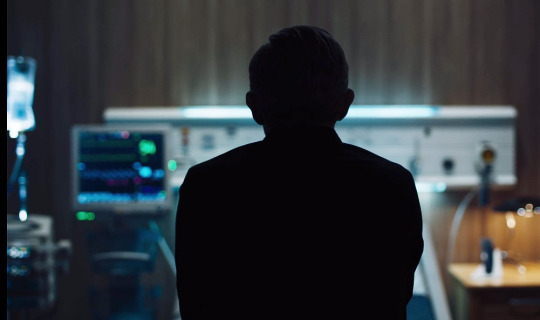
In the mean time, the weirdness takes absurd proportions, because the story is no longer reflecting ’real’ events described by the blog. The ’new’ things that happen are rather parts of drug-induced dream scenarios after Sherlock’s OD I believe, as literally shown in TAB. I think these dream scenarios are made up by a mix of re-cycled elements from Sherlock’s own memories of actual events, mostly from his adult life in episode 1-8, and Sherlock’s imagination of places where he’s never been. But I also believe that the ’real’ Sherlock is hospitalized and comatose after his OD, which sometimes bleeds through in HLV, TAB and S4. So the number one thing I expect to see happen in S5 is Sherlock finally waking up to reality instead of being trapped in his own variant of Dystopia; a reality where he finally gets the opportunity to face the truth about him and John.
Tagging some people who might be interested: @the-signs-of-two @sarahthecoat @ebaeschnbliah @sagestreet @raggedyblue @gosherlocked @elldotsee @spenglernot @loveismyrevolution
324 notes
·
View notes
Text
I’m kind of amazed that no one ever seems to have made an angsty Johnlock fanvid with Wires by Athlete. I always assumed the lyrics were about an infant but my god they work as such a good soundtrack to so much.... John hunting for Sherlock in AsiP in the wrong building, the immediate aftermath of the fall, and most of all Sherlock bringing himself back to life and dragging himself up those stairs.
You got wires, goin' in
You got wires, comin' out of your skin
You got tears
Making tracks
I got tears
That are scared of the facts
Running down corridors
Through automatic doors
Got to get to you
Got to see this through
I see hope is here in a plastic box
I've seen Christmas lights reflect in your eyes
You got wires, goin' in
You got wires, comin' out of your skin
There's dry blood on your wrist
Your dry blood on my fingertip
Running down corridors
Through automatic doors
Got to get to you
Got to see this through
First night of your life
Curled up on your own
Looking at you now
You would never know
I see it in your eyes
I see it in your eyes
You'll be alright
I see it in your eyes
I see it in your eyes
You'll be alright
Alright
Running down corridors
Through automatic doors
Got to get to you
Got to see this through
I see hope is here in a plastic box
I've seen christmas lights reflect in your eyes
Down corridors
Through automatic doors
Got to get to you
Got to see this through
First night of your life
Curled up on your own
Looking at you now
You would never know
youtube
1 note
·
View note
Link
In the riveting true crime book The Ardlamont Mystery: The Real-Life Story Behind the Creation of Sherlock Holmes, Daniel Smith investigates the 1893 death of a 20-year-old man who didn’t return from a hunt. Two pioneers of forensic science, Dr. Joseph Bell and Dr. Henry Littlejohn, worked on the case and were credited as the primary influences for Arthur Conan Doyle’s legendary creation: Sherlock Holmes.
By coincidence, at the same time as “The Final Problem” appeared, a real-life murder trial was playing out in Scotland. A sensation in its own right, it also served to cast a light on the extraordinary genesis of Sherlock Holmes—although few observers quite grasped its significance at the time.
At Edinburgh’s High Court of Justiciary, a private tutor by the name of Alfred Monson was on trial for the murder (and additionally, the attempted murder) of his student, a handsome young army lieutenant called Cecil Hambrough. Cecil had lived as virtually part of Monson’s family for the best part of three years, since he was 17 years old. The case caused an absolute sensation. For one thing, Monson was far from the typical defendant in a capital case. He was the son of a rector whose close family relations included Lord Oxenbridge (who had become the Queen’s Master of the Horse the previous year), Lord Galway, and the British ambassador to Austria.
Monson had been employed by Cecil’s father to prepare the boy for a gentleman’s life in the military. By the summer of 1893, Cecil was living with Monson, his wife, and their young children at the grand Ardlamont estate on Scotland’s Cowal peninsula. One stormy morning in August, Monson, Hamborough, and a mysterious third man known as Mr. Scott embarked on a hunting expedition. But only Monson and Scott came back alive. Cecil received a shotgun wound to his head and died where he fell. The local doctor accepted that a tragic accident had taken place and so the victim was buried at the family church on his native Isle of Wight, off England’s southern coast. But over the next few weeks, it emerged that Monson and his wife had taken out life insurance policies on their charge. What had appeared accident was now treated as murder. Cecil’s body was exhumed and so began one of the Victorian era’s most notorious murder investigations—one that came to be known as the Ardlamont Mystery.
For Holmes aficionados, Cecil Hambrough’s death might have evoked memories of one of Conan Doyle’s earlier Holmes short stories—"The Boscombe Valley Mystery.“ That tale featured a young man who reported the death of his father—in whose company he had recently been—his “body stretched out upon the grass” in a wood. But whereas Cecil’s death was initially regarded as accidental—ensuring that a vast wealth of evidence from the scene of death was lost—in “The Boscombe Valley Mystery” the son was assumed to have had a hand in his father’s demise. So, when Holmes got on the case, he had plenty of evidence to mull over. Not so the poor expert forensic witnesses charged with figuring out what had happened at Ardlamont.
Among those experts were two of the most respected medical men in Edinburgh society, not to mention pioneers in the then burgeoning world of forensic science. Their names were Joseph Bell and Henry Littlejohn. Moreover, as chance would have it, they were the chief inspirations behind the creation of Sherlock Holmes.
Bell and Littlejohn were leading figures in the medical faculty at Edinburgh University when Conan Doyle began his medical studies there in 1876. As had been subsequently well documented, Bell had an extraordinary gift for establishing the symptoms and back stories of his patients simply by close observation of the subtlest non-verbal signals. He could tell a man’s profession from his walk, whether he had served in the military by the way he wore his hat, or where he lived from the state of his shoes.
His displays of inductive reasoning—that is to say, making broad generalizations from specific observations—fascinated Conan Doyle, who stretched the technique as far as he could in the character of Holmes. In 1892, Conan Doyle even wrote to Bell to tell him: “It is most certainly to you that I owe Sherlock Holmes.” That same year, Bell was named in the press as “the real life” Holmes. Whether or not he enjoyed the attention that this revelation engendered is moot, but his name became synonymous with that of the fictional detective forevermore.
Littlejohn, though, received no such acknowledgement in his lifetime. Yet at the time when Conan Doyle was studying under Bell (in fact, he even worked as Bell’s medical assistant for an extended period), Littlejohn was the country’s leading forensic expert. Moreover, as the official Police Surgeon, he was the first port of call for the police whenever there was a suspicious death. He was a virtual ever-present at the major murder scenes in Scotland throughout the second half of the 19th century.
He was, also, a great friend of Bell. So how could Conan Doyle not have been influenced by him in the creation of Holmes? It was only in 1929, years after Littlejohn’s death, that Conan Doyle is recorded as acknowledging his contribution. At a talk he gave in Nairobi, Kenya, he revealed that it was the methods of Bell and Littlejohn that first induced him to write a detective story from the point of view of the scientific man.
It is my belief that Littlejohn was purposefully written out of the Holmes genesis story so that he might continue his vital work unhindered. During the Ardlamont trial, Bell gave an interview to a journalist from the Pall Mall Gazette. He revealed that he and Littlejohn had been working together on cases for the police for over twenty years. Littlejohn—as the paid employee of the police—routinely called upon Bell to be his “second man” on investigations. In other words, Bell was something akin to Littlejohn’s Watson.
—Daniel Smith
120 notes
·
View notes
Text
noah fence but in the abominable bride I’m p sure the only characters who slip out of the Victorian era and transcend time into the 21st century are the queercoded characters. Sherlock uses modern phrases such “crime scene”. Mycroft uses “your life in a nutshell” and “the virus in the data”. John’s modern day self briefly replaces the Victorian John and speaks in a modern tone. Moriarty talks with a modern tone and makes modern jokes. Beyond making it black and white, Irene’s photograph isn’t altered to look Victorian, which would have been extremely easy to do. It’s almost as if the straight characters wouldn’t change because they’re suited for any era 🤔 but there’s something…about those five…..that makes them more suited for modern times 🤔 I wonder what that could possibly be 🤔
153 notes
·
View notes
Photo
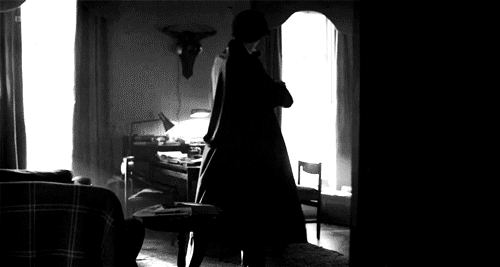

Draw your chair up and hand me my violin, for the only problem we have still to solve is how to while away these bleak autumnal evenings.
-Sherlock Holmes, Adventure of The Noble Bachelor
353 notes
·
View notes
Text
Liking this exchange a lot.
“What is the meaning of it, Watson?” said Holmes solemnly as he laid down the paper. “What object is served by this circle of misery and violence and fear? It must tend to some end, or else our universe is ruled by chance, which is unthinkable. But what end? There is the great standing perennial problem to which human reason is as far from an answer as ever.” - The closing lines of The Adventure of the Cardboard Box.
I’ll happily consider any reading that makes sense of John Watson violently betraying his core values and then handing his redemption arc to “Mary”. It violates his canonical character to such a degree that it’s no longer John Watson but someone who merely looks like him. I know I’ve said this a dozen ways before but morality and what constitutes justice is SO important in ACD canon and to the characters of Holmes and Watson. It’s something they revisit time and again and negotiate. But here’s the kicker: Holmes trusts Watson’s moral centre. Watson is fundamentally good. He is capable of violence but he has a very firm moral code at his core. Right and wrong mean something to him. And to Sherlock Holmes. And Watson’s morality means something to Holmes. Moftiss created both a John and Mary that violated that meaning in the extreme. It’s not simply the violence John metes out on Sherlock that’s a problem. I’d argue the Mary arc is worse because it not only compounds but displaces John’s moral centre. Mary made him want to be a better man? Come on. It’s patently absurd. He betrayed Sherlock with that violence. Absolutely. With near terminal consequences. And thus completely betrayed himself. Any meaningful redemption therefore needed to be between them with no women (Mary or Irene) making the meaning for it. Personally I don’t think it was intentionally written to be read as all in Sherlock’s head but it reads so much better this way as a nightmarish hell of Sherlock’s projected fears. So much better. Garbled rant over.
If
Eurus Faith = ASIP John

And
Eurus = an emotional part of Sherlock
And
Real Faith = someone Sherlock has never met, the daughter of a serial killer
And
Mary = the facade of heteronormativity (which John appears *very* invested in)
And
S4 happens within Sherlock’s mind
Then
The lowest point in the series - the point where John *completely* departs from character, beats Sherlock up, and leaves him, can be reinterpreted.
What we are seeing are Sherlock’s worst fears:
If John’s facade of heteronormativity dies for Sherlock - then John will hate him, hurt him, and leave him.
Moreover, this sequence is triggered by the realisation that the person Sherlock connected with - the person who liked him, that he saved, that ate chips with him - the John that adored him - never existed outside his mind. He is worried that Eurus Faith/John is a creation of a needy, underdeveloped part of him desperate for connection but isolated his whole life, and he may really be someone quite different.
72 notes
·
View notes
Text
I notice that this release date is in US format: 12/21/2021
Or put another way 1 221 2021
As an aside: It’s not quite a palindrome but you also get two 221s when it’s backward: 1 2021 221
It’ll be 10 years at that point since the release of the second movie. Which seems quite the happy coincidence.
I can only assume Warner’s are well aware of that and the marketing department are ready to mock up the graphics magic for the teaser trailer.
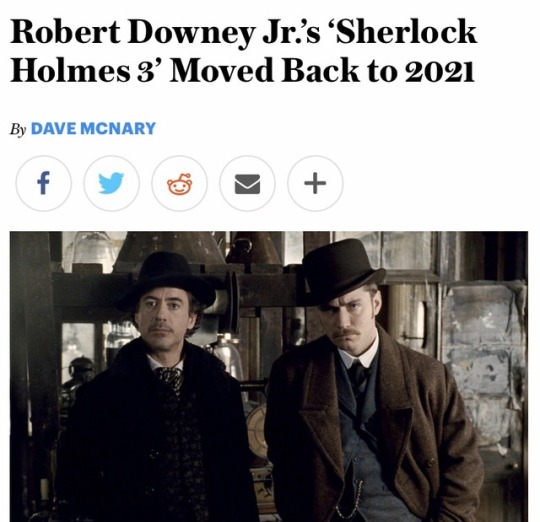
Warner Bros. has moved “Sherlock Holmes 3” back a year, with the studio announcing a Dec. 21, 2021 release date. No director is yet attached. Chris Brancato has written the script. Susan Downey, Joel Silver and Lionel Wigram are producing “Sherlock Holmes 3.” (x)
1K notes
·
View notes
Photo

Jack Dorsey, poster child for fascist appeasement.
10K notes
·
View notes
Text
Oh I will have some for sure but I am resisting the urge until I’ve read the whole thing and have the full context. 😬
Been meaning to read this for an absolute age. Glad to finally have a copy. Very interesting.
How anyone read Holmes & Watson of canon as straight is truly remarkable.
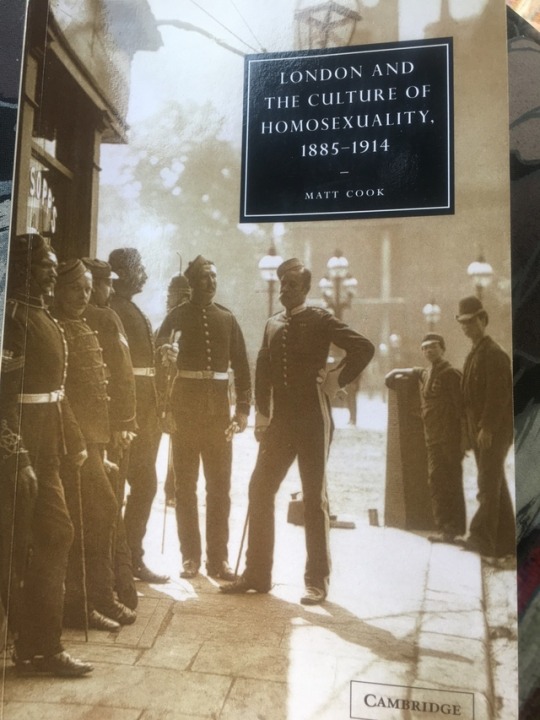
31 notes
·
View notes
Note
Good notes these.
For those wanting more read the opening paras of STUD and then look at the wiki page for the Pakistani city of Peshawar (where Watson recovers from his battle wounds and falls ill for months) and look at the History section and particularly the subsection “British Raj”. Gives a contextual glimpse of the movable borders of British India in the 19th century. (Cue Eddie Izzard voice: “Do you have a flag?”)
Do you find it odd that with a few exceptions (like Sherlock) that most adaptations even Granda keeping saying that Watson's military service was done in India even though "Study in Scarlet" explicitly says he was in the Afghan War? Watson would have to through India to get to Afghanistan, but it seems misleading to say his stint in the army was done in India.
Not particularly, no. Watson himself sometimes referred to his service in India. Witness:
In the Resident Patient: “For myself, my term of service in India had trained me to stand heat better than cold, and a thermometer of 90 was no hardship.”
In The Cardboard Box, he repeats that sentence almost exactly: “For myself, my term of service in India had trained me to stand heat better than cold, and a thermometer at ninety was no hardship.”
In the Problem of Thor Bridge: “Somewhere in the vaults of the bank of Cox and Co., at Charing Cross, there is a travel-worn and battered tin dispatch-box with my name, John H. Watson, M.D., Late Indian Army, painted upon the lid.”
And in Doyle’s dramatic version of The Speckled Band, The Stonor Case, Watson says, “Why, I knew your mother well in India, and I remember you and your poor sister when you were schoolgirls.”
This is Watson, after all: just because he says something in one story doesn’t preclude him from saying something else in another. In fact, I make it out as four stories-and-plays that say “India,” and five that say “Afghanistan” (Study in Scarlet, Sign of Four, Boscombe Valley, Musgrave Ritual, and Reigate Squires.) However, I don’t think this is quite a case of Watson’s mysterious wandering wound, given that Watson’s regiment was originally stationed in Bombay and his hospitalisation was in Peshawar (which was in British India – or what would soon be in British India, the border moved around somewhat).
113 notes
·
View notes
Text
Been meaning to read this for an absolute age. Glad to finally have a copy. Very interesting.
How anyone read Holmes & Watson of canon as straight is truly remarkable.

31 notes
·
View notes